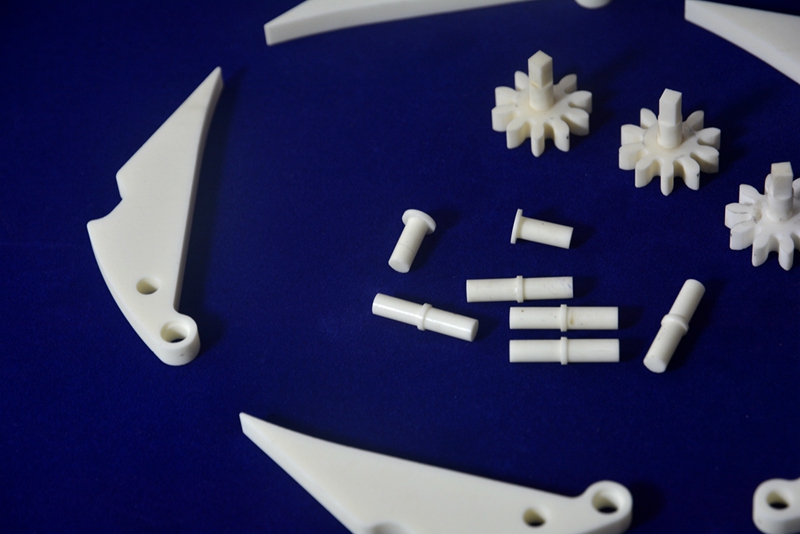While there are various techniques for shaping ceramics, such as waterjet cutting, laser cutting, and kiln processing, several compelling reasons make CNC machining an advantageous method for producing ceramic components.
Versatility
Ceramic CNC machining stands out for its exceptional precision, enabling the production of complex and detailed ceramic components. The integration of CNC machinery and sophisticated software allows for meticulous control over cutting and shaping tools, ensuring the fabrication of high-quality and accurate parts that satisfy even the most stringent requirements.
Cost-Effectiveness
When compared to other fabrication methods like laser cutting and waterjet cutting, CNC machining of ceramics emerges as a more cost-effective option. This cost efficiency stems from the reduced number of errors and a higher production rate achieved with CNC machining compared to laser cutting. Additionally, the overall expenses associated with CNC machining for ceramics tend to be significantly lower than those for laser cutting.
Scalability
The process of machining ceramics with CNC is highly scalable. This means that it allows for the adjustment of production volumes based on market demand, either increasing or decreasing the quantity of ceramic parts manufactured. Such scalability aids in minimizing material waste, as products are made according to demand.
High Precision in Cutting and Shaping
The process of CNC machining offers exceptional control and precision. This aspect is particularly crucial for machining ceramics, considering their inherent rigidity and brittleness.
Capability to Make Complex Geometries
CNC machining of ceramics is capable of creating intricate shapes that might be challenging or even unfeasible to produce using alternative techniques.
Tight Tolerances
Ceramic CNC machining is renowned for its ability to achieve very tight tolerances, which are often essential for numerous applications.
Ceramic CNC machining, though beneficial in certain aspects, also has its share of drawbacks. Here are some of the disadvantages associated with ceramic CNC machining.
Brittle Nature
Ceramics are recognized for their strength and hardness, yet they are notably brittle due to their crystalline structure, which lacks the flexibility found in metals. As a result, they are prone to cracking and chipping under stress.
Vulnerability to Damage
During the CNC machining process, ceramic materials are at a heightened risk of damage. The machining process can exacerbate existing stresses, making it difficult to attain the intended design. This issue often results in the materials suffering from cracks, chips, or breaks throughout the machining process.
Difficulty in Machining
Machining ceramics poses a significant challenge due to their extreme hardness, often surpassing the hardness of the cutting tools used in CNC machining. This discrepancy can cause substantial wear and damage to the tools, resulting in higher tooling expenses, extended machining durations, and a potential decrease in the quality of the finished parts.
Extended Production Time
Ceramic CNC machining is often characterized by extended production times. The inherent hardness and brittleness of ceramics make the machining process more complex and time-consuming than working with metals. Additionally, the high level of precision required for ceramic machining necessitates the use of specialized tools and equipment, which can further delay the completion of projects.

Ceramic Adhesive Introduction
What Kinds Of Wear Resistant Ceramic Pipes Are T
Difference Between Alumina Ceramics And Mullite
Contact: Kevin Zhou
Phone: 86-15250828645
Tel: 86-15250828645
Email: tyceramic001@163.com
Add: Chuanbu Industrial park,yixing city,Jiangsu province